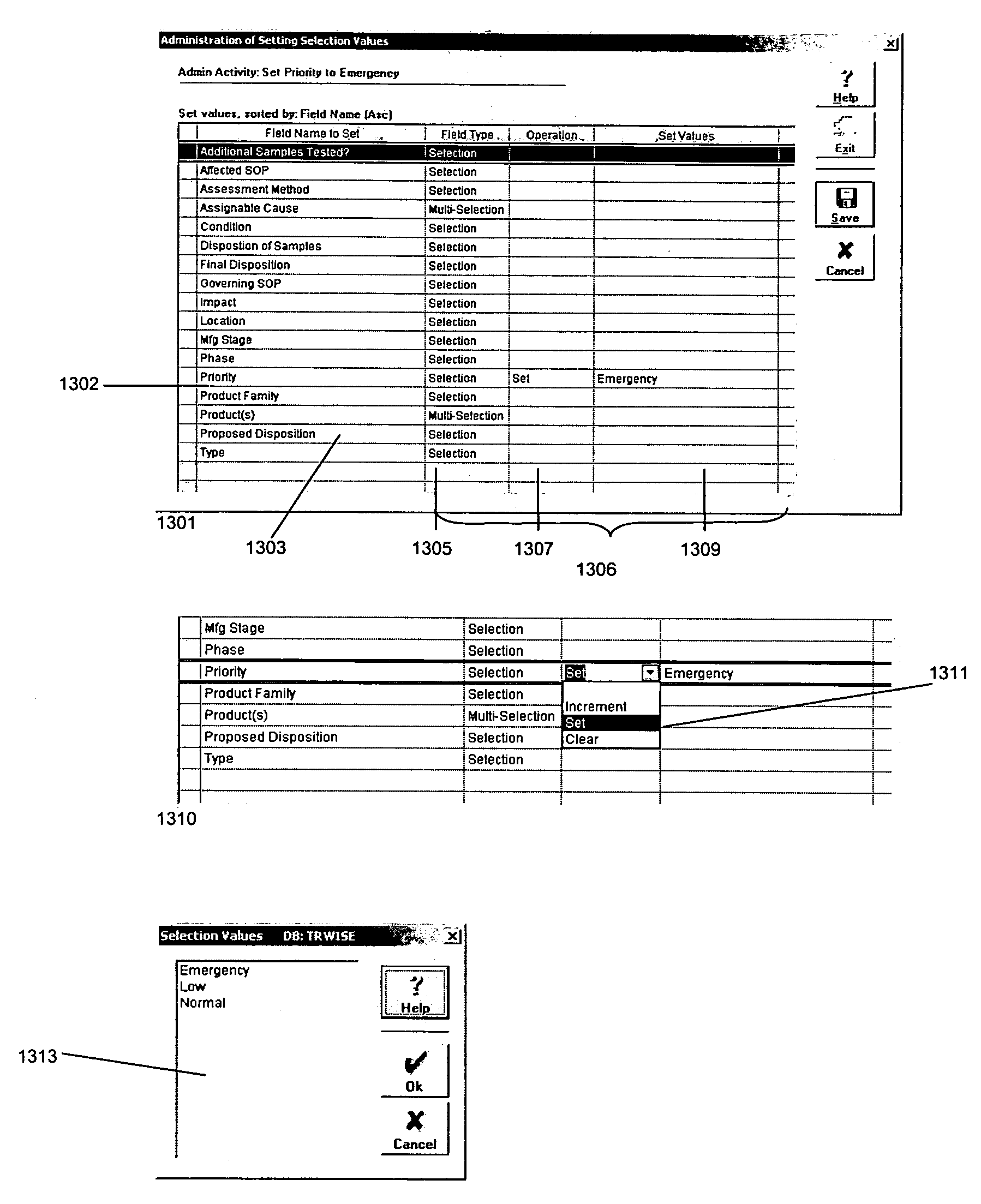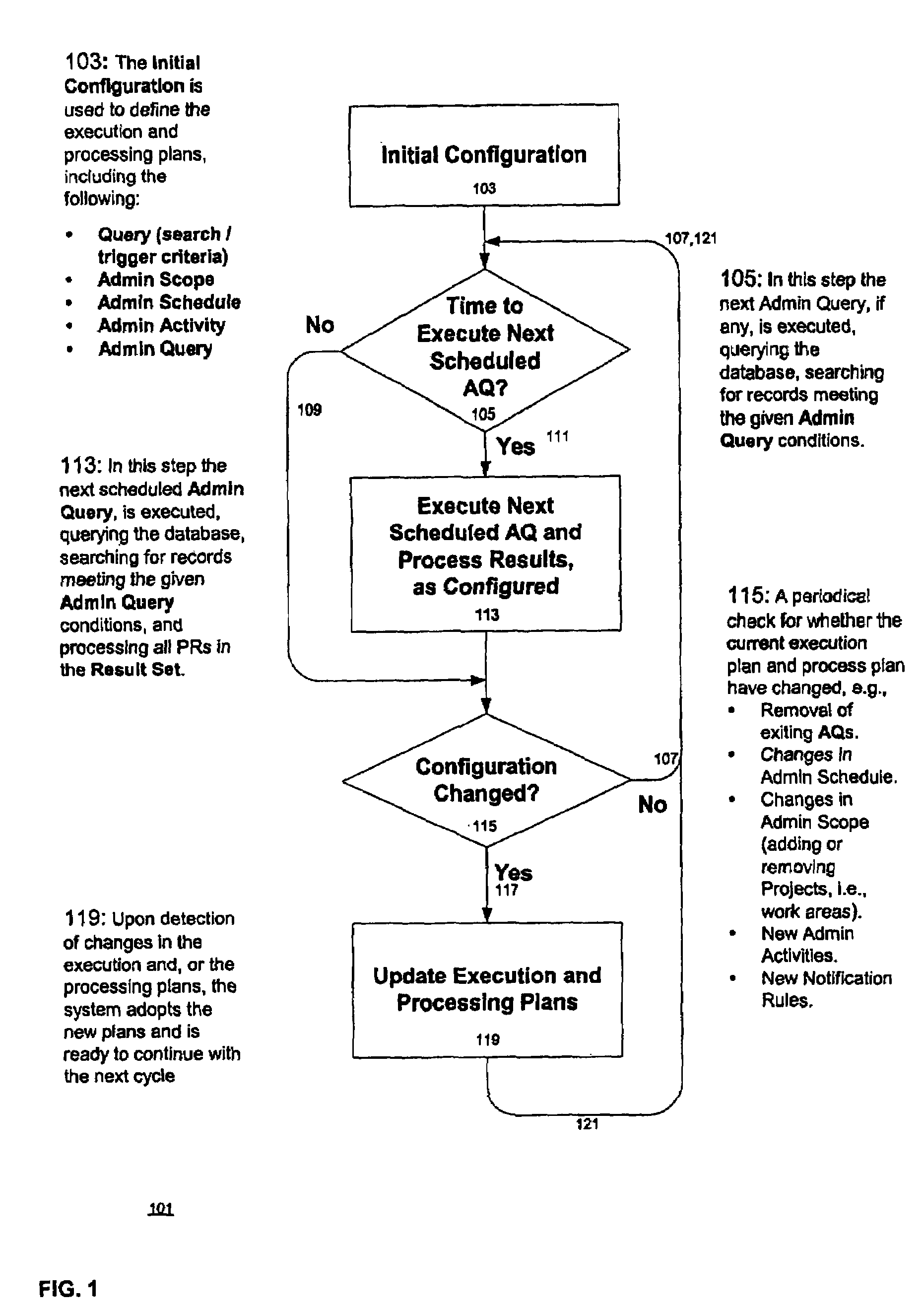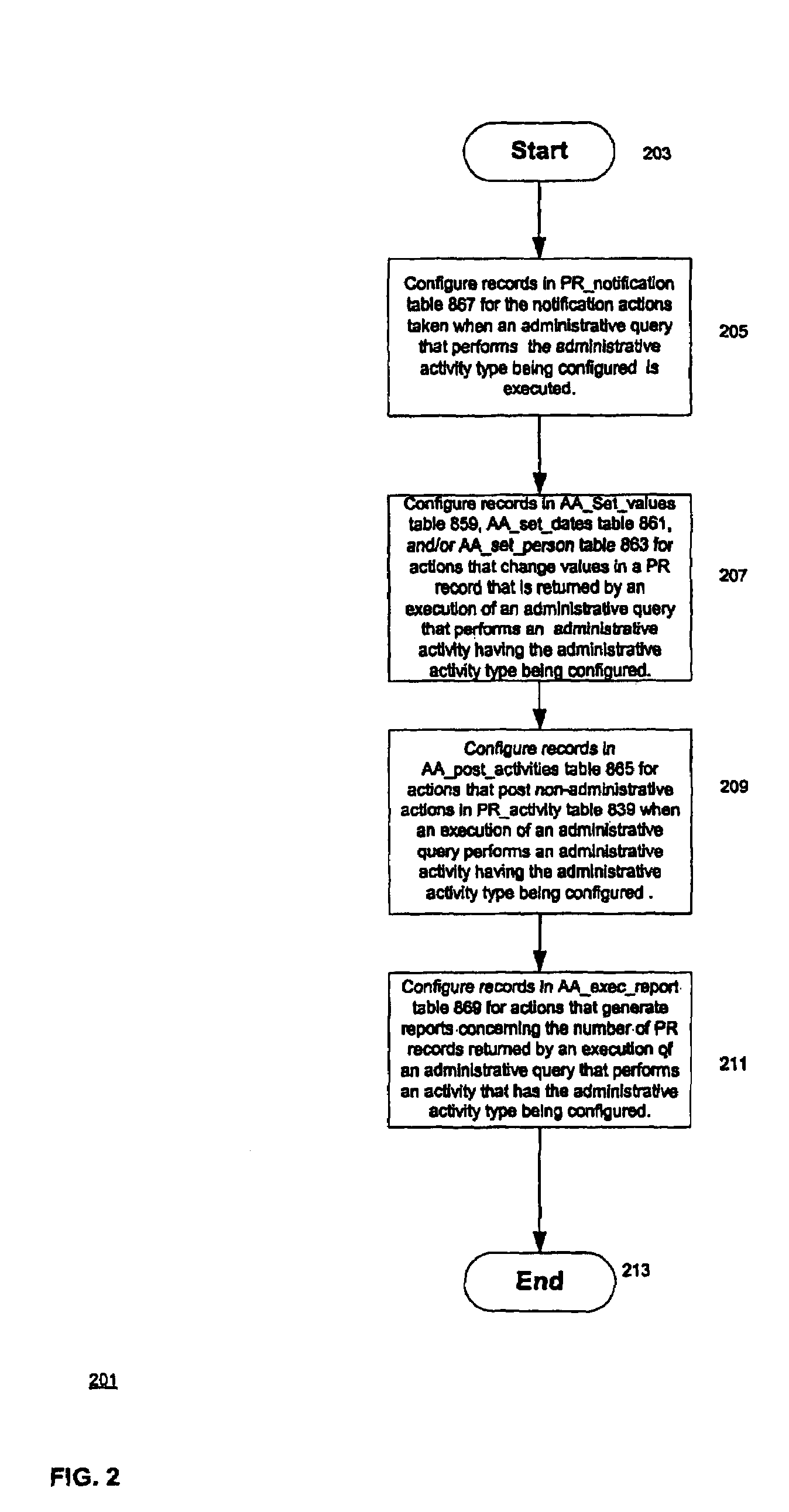Graphical user interface for automated process control
a technology of process control and user interface, applied in the field of process control, can solve the problems of limited use of computers in process control systems, user inability to configure time intervals or actions themselves, and conventional process control systems suffer from major drawbacks
- Summary
- Abstract
- Description
- Claims
- Application Information
AI Technical Summary
Benefits of technology
Problems solved by technology
Method used
Image
Examples
Embodiment Construction
[0033]The following Detailed Description will begin with an overview of a process control system in which the invention is embodied, continue with a detailed description of the tables belonging to the process control system and the relationships between them, thereupon provide a detailed description of the operation of the process control system, and will finally describe the graphical user interface of the invention.
Overview of the Process Control System in Which the Invention is Embodied—FIG. 8
[0034]FIG. 8 shows an overview of an embodiment of automated process control system 801 that is constructed according to the principles of the invention. The embodiment is used to control business processes such as handling orders or customer complaints, but the techniques of the invention can be employed equally well in systems that control industrial or technical processes such as oil refining, electric power generation, or telephone or packet switching.
[0035]System 801 is implemented usin...
PUM
 Login to View More
Login to View More Abstract
Description
Claims
Application Information
 Login to View More
Login to View More - R&D
- Intellectual Property
- Life Sciences
- Materials
- Tech Scout
- Unparalleled Data Quality
- Higher Quality Content
- 60% Fewer Hallucinations
Browse by: Latest US Patents, China's latest patents, Technical Efficacy Thesaurus, Application Domain, Technology Topic, Popular Technical Reports.
© 2025 PatSnap. All rights reserved.Legal|Privacy policy|Modern Slavery Act Transparency Statement|Sitemap|About US| Contact US: help@patsnap.com



